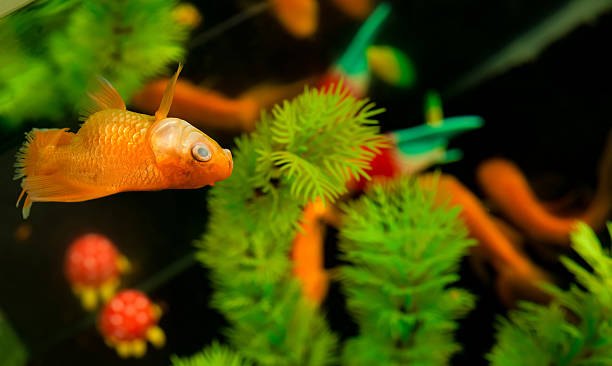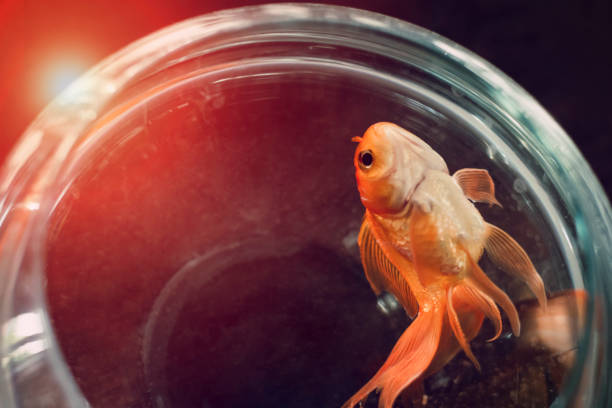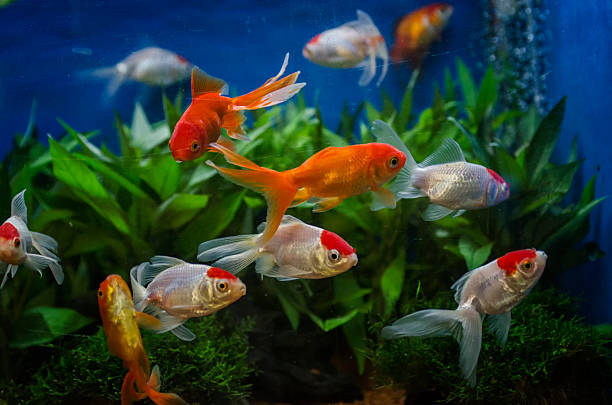What to Do When a Fish Dies in Your Aquarium: Important Tips to Follow
If you’ve been keeping fish in your aquarium, you might have been disappointed lately – chances are, one or more of your fish have died. And while it’s unfortunate, it’s not really that surprising. Fish can die for a variety of reasons, and sometimes it’s hard to tell which one is causing the problem.
When you discover a dead fish in your aquarium, there are a few things you should do. First, remove the fish and place it in a separate container of fresh water. Next, make sure the tank is properly maintained and that there is no obvious cause of death for the other inhabitants. Finally, contact your local fish store or aquarium dealer to get more information on how to properly care for an aquarium full of living fish.

Table of Contents
Steps to Take Once Your Fish Dies
Get Rid of the Fish Corpse From Aquarium
If you have a fish tank, there is a good chance that at some point you will lose one of your fish. When this happens, it is important to take the time to remove the corpse of the fish from the tank so that it does not contaminate other fish or create an unpleasant odor.
Check Water for Increased Ammonia Levels
If your fish died in your aquarium and the water tests show raised ammonia levels, there are a few things you can do to try and save the fish. First, it is important to make sure that the water in the aquarium is clean. You can test the water for raised ammonia levels using a kit or by doing a quick ammonia test yourself. If the ammonia levels are high, you will need to take steps to clean up the aquarium and lower the ammonia levels.
Replace the Contaminated Water
If you have a fish that died in your aquarium, the first thing you should do is change a portion of the contaminated water. This will help to reduce the number of bacteria and other contaminants that are still present.
Add Beneficial Bacteria Starter in the Aquarium
If you have a fish that has died in your aquarium, the first thing you should do is to pour in a beneficial bacteria starter. This will help to create a hospitable environment for new fish to move in and live in. Another is adding fish tank cleaners and filters that can help remove toxins from the water.

Determine the Cause of Death
If you are unable to clean up the aquarium and lower the ammonia levels, it may be necessary to investigate the cause of death. Sometimes deaths in fish tanks can be caused by high levels of metals or other toxins in the water. If this is your case, you will need to take steps to remove any metal sources from the tank and treat any toxins that may have been present. It can be difficult to determine the cause of death in a fish tank, as different factors can contribute. Some common causes of death in fish tanks include:
- Low Oxygen Levels: This can be caused by incorrect water chemistry, a malfunctioning filter, or poor aeration. If the oxygen levels are low, it may be necessary to add more air bubblers or an air pump to help increase the level.
- Overcrowding: Overcrowding can cause stress and poor health in fish. If your tank is overcrowded, it may be necessary to move some of the fish into a smaller aquarium or buy new fish.
- Fish Diseases: Fish diseases are another common cause of death in fish tanks. These infections can come from external sources (e.g., water polluted with bacteria) or from fungal infections within the body of the fish. If you suspect that your fish may have a fish disease, consult your veterinarian.
- Poor Water Quality: Poor quality water can lead to numerous problems with your fish tank including low oxygen levels and toxic algae growth. If the water quality is poor, it may be necessary to use one of several methods (e.g., bath salt) to balance out the impacts on your aquarium population so they reach suitable endpoints again that are healthy enough to live in these conditions without dying.
- Inadequate Lighting: Species that are very sensitive to poor light conditions can become stressed and may eventually die.
- Low Nutrient Levels: Low levels of nitrogen, phosphorus, iron, or calcium from the tap water supply directly affects your fish’s health in a negative way. If your food is low in any one of these nutrients then it won’t be able to salt balance itself adequately which will negatively affect its immune system causing problems with maintaining healthy skin colors such as bleaching and goblet deformations.
- Water Parameters: Too high or too low pH levels can lead to health problems for your fish including stress, skin irritability from stressful bacterial growths in the water column which are visible as white spots on ammonia tolerant species like clownfish and also triggers a noticeable change in coloration of normally non-white fish such as angels.
- Inadequate Food: A lack of food can lead to starvation and eventually death. Make sure that your fish have enough food and that their diet includes both fresh and frozen foods.
- Water Temperature: Fish cannot survive in cold water temperatures, so make sure that their tank is heated adequately.

What Are the Signs of a Sick Fish?
When you have a fish in your aquarium that is not eating or appears to be sick, there are a few things you can do to help. You may need to get the fish to a vet as soon as possible if it has any of the following symptoms:
- A decrease in appetite
- Swimming in circles or darting around erratically
- Pale or dull coloration
- Loss of scales
How to Save a Dying Fish in an Aquarium?
If your fish is exhibiting signs of illness or injury, it is important to take action. If you are able to determine the cause of death, there are steps you can take to try and save the fish. In general, if a fish dies in an aquarium, it is important to remove the body as soon as possible. Fish have a natural instinct to bury their dead, so if left in the tank it may contaminate other fish or plants.
When Is It Safe to Restock the Tank?
When a fish dies in an aquarium, it is important to determine if the fish was sick or if there was something wrong with the tank. If the fish was sick, then it is safe to restock the tank as long as you do a water change first. If there was something wrong with the tank, then it is not safe to restock until the problem is fixed.
If a Fish Dies, Should You Change the Water?
If a fish dies in your aquarium, it is important to determine if the death was due to natural causes or if there was something wrong with the fish. If the death was due to natural causes, you do not need to do anything; however, if there was something wrong with the fish, you should change the water in your aquarium.
What to Do With the Other Aquarium Inhabitants?
If one of your fish dies, it’s important to take care of the remaining fish in the aquarium so that they don’t get stressed. Fish usually look for a new home when they’re stressed, so it’s important to make sure that there is enough space for them. You can do this by rearranging the plant’s ornaments, or by adding another tank.
Other Important Measures to Do After Fish Death
Ensure Aquarium Environment Is Suitable
When a fish dies in an aquarium, it is important to make sure the aquarium environment is right for the other fish. Aquariums can be set up with different water temperatures, pH levels, and oxygen levels to accommodate a variety of fish species.
Set Up the Aquarium Correctly
When you set up your aquarium, it is important to make sure that the water is clean and the fish are healthy. If your fish die in your aquarium, there are a few things that you can do to try and fix the problem. First, make sure that the water is clean by using a filter. Second, check to see if there is something wrong with the fish. Third, test the water temperature to see if it is too cold or too hot. Finally, try adding new fish to see if they will survive in the aquarium.
Check Your Aquarium’s Water
If your aquarium’s water is cloudy or has a bad odor, it might be time to check the water. While checking your aquarium’s water isn’t always necessary, it can help keep your fish healthy and happy.
Check the Contents of Your Aquarium
If you have a fish tank and your fish dies, it’s important to check the contents of the aquarium to see if there is anything else that may have died. If there is, you’ll need to take steps to remove it or replace it.
Pick the Correct Tankmates for Your Fish
When it comes to choosing tank mates for your fish, there are a few things to consider. First and foremost, the size of the fish you’re selecting will determine the size of the tank it needs. Second, some fish are more peaceful than others and may not require a companion. Third, some fish like to live in groups and others prefer solitude. Finally, some fish can be aggressive towards other species so it is important to research what kind of fish would be compatible before adding them to your aquarium.